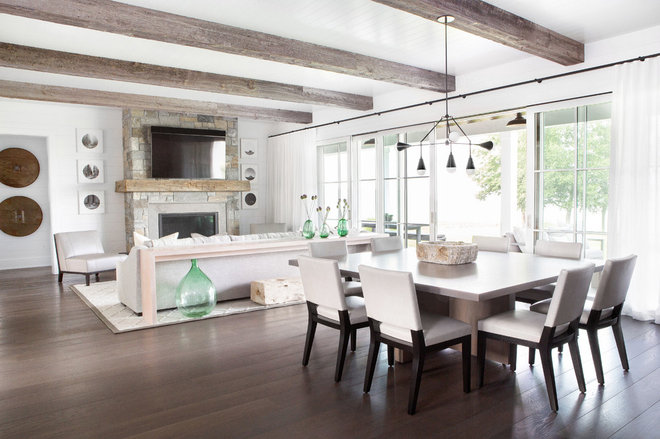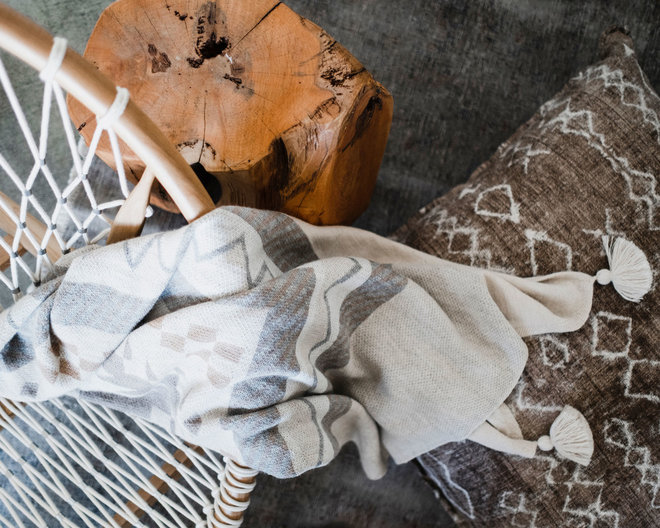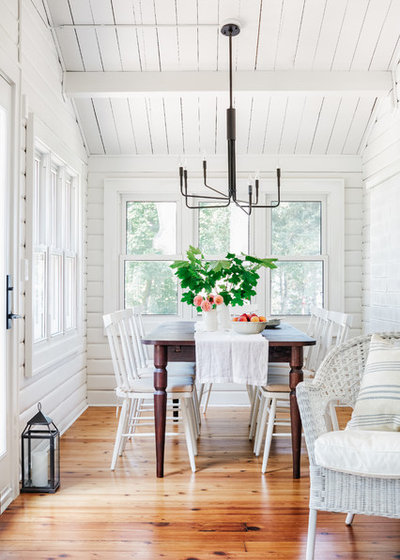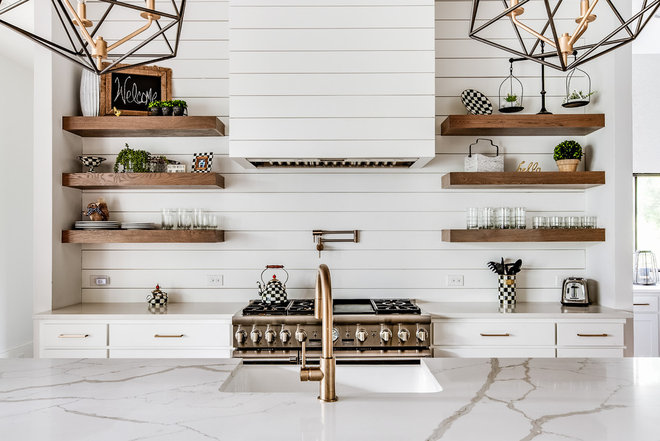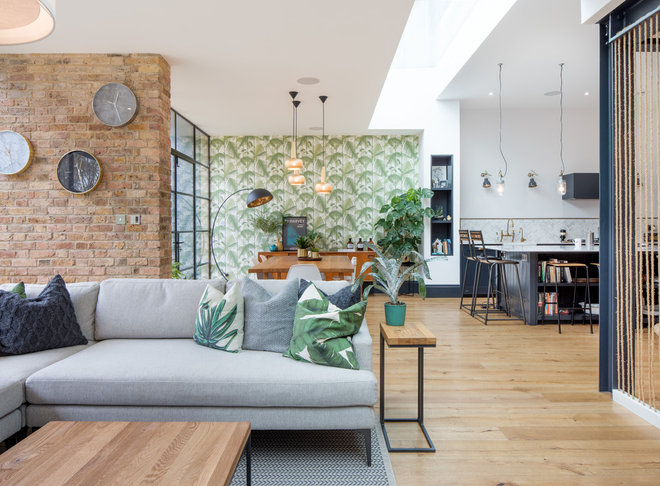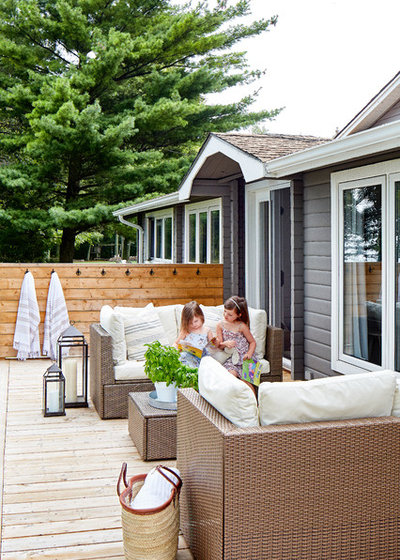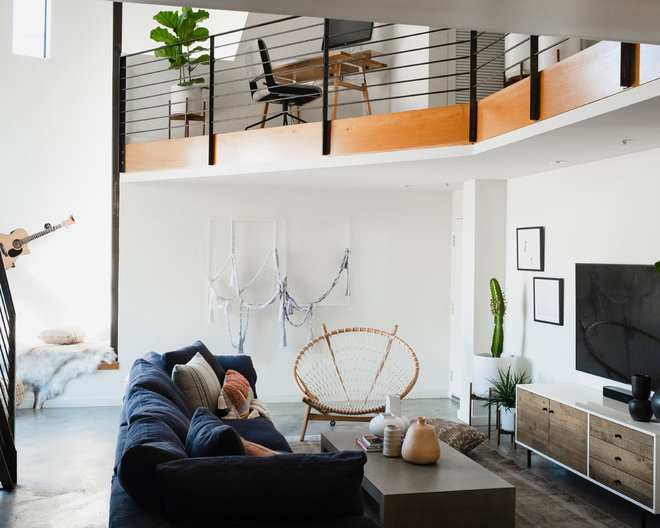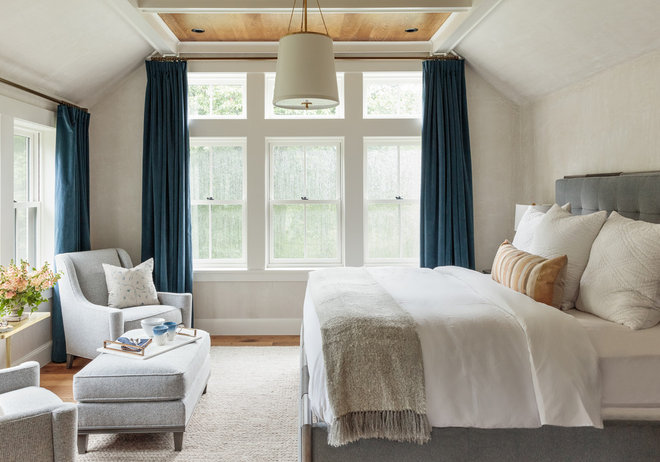How to Create Flow and Cohesion With Your Design Choices
1. Start a Whole-House Ideabook
Even if you’re not tackling the whole house at once, it’s important to have an overall picture of where you are going with regard to style. Think of this as your master plan: a single place to record all the pieces you put in your home, alongside all the things you hope to one day add. Unlike a purely inspirational ideabook, think of this one as a personalized style reference guide for your home — including everything from your current paint colors to a picture of your dream sofa. Putting it all in one place is an easy (and cost-free) way to see and edit your vision before making a purchase. Bonus: If you end up working with a pro, you will have a fantastic resource ready to share.
New to Houzz? Here’s How to Create and Use Ideabooks
2. Tell a Story With Textiles
This is where it starts to become clear why it’s so helpful to have a master plan. Instead of picking your rugs, pillows and throws as the mood strikes, take a more curated approach. Think about repeating variations of the same patterns or textile styles throughout your home for a more cohesive look. For example:
- Neutral, earthy linens and Moroccan-style rugs
- Indigo batik paired with coastal stripes
- Ikat and block prints in rich hues
- Modern geometric prints in black and white
Textile Textbook: Fall in Love With These Prints From Around the World
3. Channel a Mood
Instead of limiting yourself to a specific style, think in terms of the mood you want your home to create. This can be a more useful (and certainly more flexible) filter to use when choosing products for your home than naming a single “style.” For example, let’s say you want to create a relaxed, light mood. To channel this feeling, you might pull elements from beach, farmhouse and contemporary style — as long as the pieces you choose have the relaxed, easygoing vibe that you like, they will work together.
The Question That Can Make You Love Your Home More
Rather than trying to reinvent the wheel with each room in your home, it’s good for your sanity and your home’s look to lay some groundwork that will remain the same throughout the space. Consider putting similar styles of one or more of these elements on repeat throughout your home to increase cohesion:
- Lighting style
- Switch plates and door handles
- Metal finishes
- Neutral paint or fabric color
- Window coverings
It’s one thing to have a significant departure in style or mood from the living room to the master bedroom — but when spaces are within the same line of sight, it’s especially important to make sure everything flows. Walk through your home and notice how far your eye can see from each room: Which other rooms are visible?
This open-plan space from Thomas and Spiers Architects is a good example of creating a cohesive flow, with flooring and crisp white paint uniting the space. The living room tables echo the style of the kitchen counter stools, and the verdant green wallpaper on the far wall is brought to the foreground with the addition of a few botanical-print pillows.
Find nature-inspired pillows in the Houzz Shop
Life doesn’t stop at the door, and your style shouldn’t either. Choosing outdoor furniture and accessories in the same style as your indoor furnishings will give your whole space an intentionally designed look and feel. In this beachy cottage from Croma Design, sleek outdoor love seats with fresh white cushions outfit a comfy deck, echoing the clean and classic look inside the home.
Shop for patio furniture on Houzz
Houseplants do more than clean the air — they offer another opportunity to unify your space with color (hello, green) and style. The key is to make sure the pots and planters you select are not merely an afterthought, but rather a purposeful part of your decorating plan. In this lofty space from Oh Beauty Interiors, plants on both levels nestle into modern white planters on wooden stands.
10 Style-Boosting Design Ideas for Your Houseplant Collection
8. Enlist a Pro
There’s a reason designers are paid for what they do — it’s challenging work! Whether you need to furnish a single room or an entire house, if you would like help creating a cohesive look that flows beautifully, consider contacting an interior designer to get your project started.
